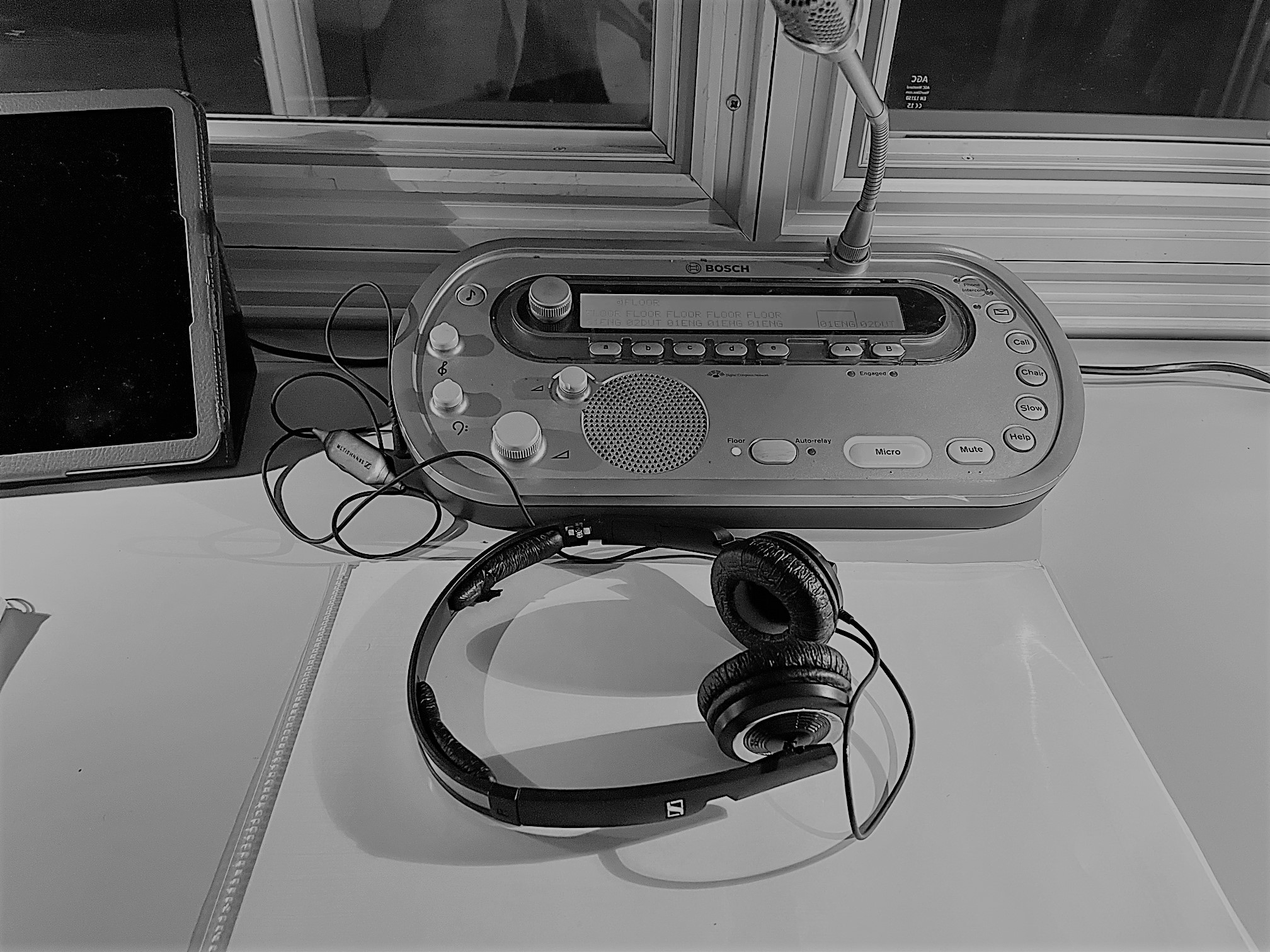If you require an interpreter, you need to know which technique will be best for conveying your message correctly and at the right time.
Liaison Interpretation The interpreter translates a few of the speaker’s sentences at a time; his counterpart replies and the interpreter translates these sentences back to the speaker. Liaison interpreters work both ways, so conversations take twice as long. Suitable for: business presentations, press conferences, guided tours, negotiations, interviews or executing deeds and contracts.
Consecutive Interpretation Speakers talk for 6 to 8 minutes; the interpreter takes notes and then relays a true and accurate version of the speaker’s narrative in the other language. Consecutive interpretation is time-intensive and is therefore not used very often. Suitable for: meetings with few attendees and business presentations for a small audience. Neither liaison nor consecutive interpreters use any special equipment.
Simultaneous Interpretation This is one of the most intensive interpretation techniques and requires utmost concentration. That is why these interpreters work in sound-proof booths and listen to the speaker’s voice by means of headphones. While the speaker addresses the audience, the interpreter converts his words into another language. The audience use wireless headphones. Simultaneous interpretation is most often used at conferences, which is why simultaneous interpreters are also known as conference interpreters. Simultaneous interpretation is very taxing. This is why two interpreters are required for each language, taking turns every 20-30 minutes. Built-in booths are common at conference venues, or mobile booths may be used at virtually every other location (even outdoors!). Many suppliers of sound equipment also provide specialized interpreting equipment.
Whispered Interpretation is a lot like simultaneous interpretation, but the interpreter sits next to one or two audience members and translates the speaker’s words, in whispers, during the speech. Whispered interpretation requires the undivided attention of the interpreter, because he or she can be easily distracted. Moreover, other guests may be bothered by the interpreter whispering in another language. Whispered interpretation can also be done by means of a ‘tour guide system’, a mobile and wireless system with headphones for several members of the audience and a sensitive microphone for the interpreter. Whispered interpretation is taxing primarily because the interpreter has to rely on unamplified, unfiltered ambient sound. This is why two interpreters take turns during long presentations, to guarantee the quality of your presentation in the target language.



